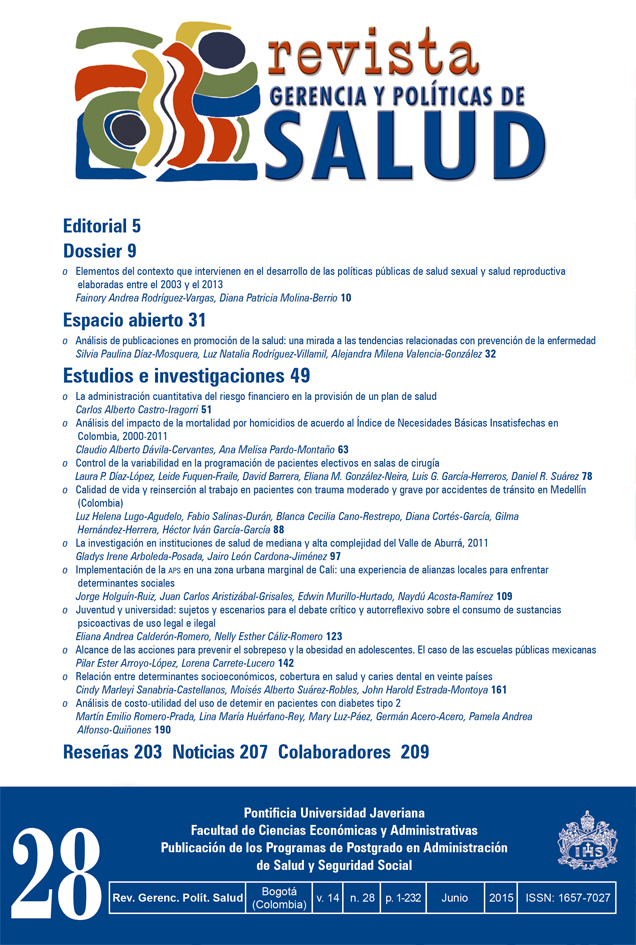Resumo
Objetivo: avaliar a qualidade de vida (cv) e sua relação com a reinserção ao trabalho, depressão e dor, em pessoas lesas em acidentes de trânsito. Métodos: pacientes com trauma moderado ou grave, avaliou-se reinserção ao trabalho, cv (sf-36), depressão (phq-9) e dor (escala analógica visual). Resultados: doze meses depois do trauma reintegraram-se 367 de 451 pacientes (81,4 %). Os pacientes não reinseridos tiveram menores pontuações nas subescalas de cv se comparados com as de referência, e nos que se reintegraram foram superiores. Não se observou depressão e o phq-9 apresentou maior correlação com a subescala desempenho emocional do sf-36 nos reinseridos e com a de desempenho físico nos que não se reinseriram. A gravidade da lesão e a dor afetaram a cv. Conclusão: a cv em pacientes que não foram reinseridos laboralmente foi inferior e esteve afetada pela gravidade da lesão e a depressão.
Aviso de direitos autorais
A revista Gerencia y Políticas de Salud está registrada sob a licença Creative Commons Recognition 4.0 International. Portanto, este trabalho pode ser reproduzido, distribuído e comunicado publicamente em formato digital, desde que o nome dos autores e da Pontificia Universidad Javeriana sejam reconhecidos. É permitido citar, adaptar, transformar, autoarquivar, republicar e criar a partir do material, para qualquer finalidade (inclusive comercial), desde que a autoria seja devidamente reconhecida, e um link do trabalho original seja fornecido e indicar se as alterações tiverem sido feitas. A Pontificia Universidad Javeriana não detém os direitos sobre os trabalhos publicados e os conteúdos são de responsabilidade exclusiva dos autores, que preservam seus direitos morais, intelectuais, de privacidade e de publicidade.
O endosso da intervenção do trabalho (revisão, correção de estilo, tradução, layout) e sua posterior divulgação são concedidos através de uma licença para uso e não através de uma transferência de direitos, o que significa que a revista e a Pontificia Universidad Javeriana se eximem de qualquer responsabilidade que podem surgir de má conduta ética por parte dos autores. Como resultado da proteção fornecida pela licença de uso, a revista não é obrigada a publicar retratações ou modificar as informações já publicadas, a menos que a errata surja do processo de gestão editorial. A publicação dos conteúdos desta revista não representa regalias para os contribuintes.


